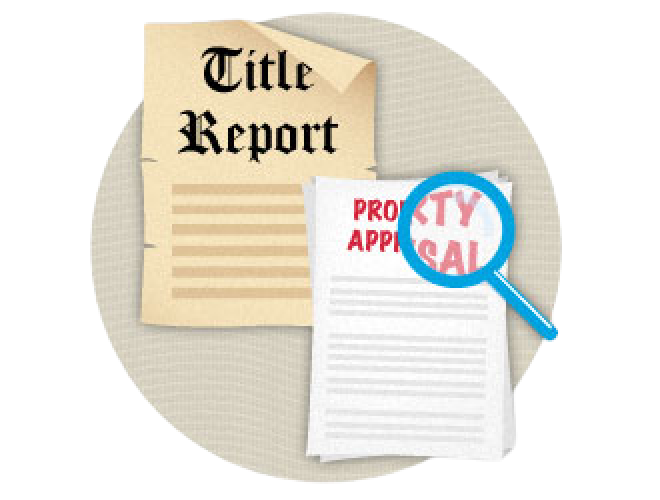Mortgage Process
Mortgage Loan Application Process
1. Pre-Qualification

Pre-Qualification
The mortgage process begins by filling out a loan application with a mortgage originator (aka a loan officer).
- Name
- Social Security number
- Date of birth
- Present address and address history
- Present employer and employment history
The application will also inventory your available liquid assets (checking, savings, retirement etc) as well as your “documentable” income (W2′s + pay stubs… or full tax returns for the self-employed—we’ll get to this later).
Nothing can really happen without a loan application. Without the official application, a loan officer can only make assumptions, which is never ideal. A complete mortgage application allows the mortgage professional to see exactly what will be underwritten, and therefore will allow him to set your expectations about what programs and pricing will be available to you and what your best options will be.
Once the application is received, the loan officer will pull a credit report that will take a snapshot of your current debt obligations. The associated credit score will also give him a sense of your relationship to that debt and how you are managing it.
With this information, we can now determine what size loan the borrower would qualify to borrow. This amount is mostly based on a “debt to income ratio” calculation, where we make sure the borrower does not exceed a certain amount of monthly debt payments (including the new mortgage obligation). We determine what monthly payment would be the maximum allowable, and based on the available mortgage rate, we determine what size loan this would translate to.
The borrower is now pre-qualified for a real estate mortgage for a refinance or purchase!
NOTE: A mortgage application is in no way a commitment or obligation on the part of the applicant, and although some lenders charge an “application fee” this fee is rare, and it should be very easy to find a lender who will take your application for free. Applying with a lender doesn’t obligate you to take out a mortgage, nor does it obligate you to work with that lender.
2. Documentation

Documentation to Initial Underwriting
Whether you are either 1) shopping for a home or 2) ready to proceed with a refinance of your existing mortgage, we will want to have complete confirmation proving the existence of your income with some supporting documentation.
I mentioned earlier that we are looking for “documentable” income, and the adjective “documentable” is key here, as mortgage approvals are based only upon what can be proved on paper. This proof must be on the same level as what is submitted to the IRS. Generally for normal salaried/wage earner/borrowers the W2 and paystub is completely sufficient to prove income. But for self-employed, the full tax returns are important. We can only give you credit for your adjusted AFTER EXPENSES income. A profit and loss statement, or a 1099 is not admissible for the purposes of loan approval. Only filed personal income tax returns will do (for the self-employed).
So once the proof of income is established, we submit the file to processing where it is prepared for underwriting. The processor will organize the file in such a way that makes the underwriting decision as quick and easy as is possible.
The main job of the Loan Officer is to initiate the conversation with a potential borrower, and to educate and advise that borrower about the costs and benefits of their different options. The job of the processor is to execute whatever plan has been agreed upon. The underwriter is the judge and the jury for your loan approval. Once a loan plan has been developed by the Loan Officer and Borrower, the Processor commonly becomes the main point of contact from here until loan closing.
The underwriter makes sure that all the loan guidelines are appropriately met, and at this point in the process will create a list specific to this borrower of additional documentation needed to create a complete and fundable file.
Once we have this list the borrower is now “conditionally approved”. So this means the underwriter has seen the file and it so far fits within guidelines, but more documentation is still needed.
3. Property Approval

Property Approval
Now this loan file is underwriter approved. If this is a purchase transaction, we are now waiting for an offer to be made and accepted. Once this happens, we gather specific info about the property. If this is a refinance mortgage file, then we already know exactly which property will be used to secure the new mortgage loan, so we can get right to work on “property approval.”
So during the first steps of this mortgage process, we establish that the borrower has the ability and likelihood to make the mortgage payments on time, without going into default. But since the lenders can never be fully certain that any loan will avoid default, they further secure their position by attaching a lien to the subject property with a deed of trust. The Deed of Trust is the KEY document for a mortgage lender. This document gives them the ability to foreclose on the home in the event of a default of payment. Since the real estate is used to secure the mortgage, the lender needs a variety of data detailing the specific aspects of the property. We do this with a title report, and an appraisal report.
The title report confirms that we are in a position either to make a clean and legal transfer of ownership, or in a position to refinance existing debts attached to the property. The contents of the title report detail who is on the title currently (and therefore who has the legal right to transact upon the property). The title report also details any and all liens against the property. These liens or loans will have to be paid off and fully retired prior to the funding of the new mortgage loan. In a purchase example, this debt is generally the current loan of the seller, which will be paid in full out of the proceeds of the purchase funds. In a refinance, the title report describes the current loan that will be replaced with a new loan that has more favorable terms for the borrower.
The appraisal report confirms that the home is in working order, and (in a purchase) worth the price that has been agreed upon. An appraisal in a refinance mortgage establishes the market value of the real estate. This value affects many fundamental aspects of the available mortgage: It can affect available loan size, as well as available rate. Loans are extended based on a “loan to value” or LTV ratio. Different loan programs allow 80% of value, or 97.75% of value, or unlimited loan to value in the case of the new HARP 2.0 refinance program.
An appraisal in a purchase transaction is much more likely to achieve the agreed upon purchase price. This is because the contract reflects an actual market dynamic: there is a buyer and a seller and they have both agreed upon a price. In a refinance, the appraisal can be much more unpredictable. The appraiser has to base their price opinion on price per square foot of recent sales in the marketplace, which is very difficult, and in a declining or unstable marketplace the value they come up with is often frustratingly low.
4. Final Approval

Final Approval
Once all the property reports are in hand, as well as the additional list of items required from initial underwriting, the file goes BACK to the underwriter for final sign off. At this point, the underwriter could fully sign off on the file as ready to fund, or possibly ask for additional clarifying documentation. Sometimes the documentation provided is insufficient or raises more questions or a need for an additional document etc. This is not uncommon, and we just provide what is needed at this time to get that full sign off.
The best practice for the mortgage process is that the underwriter only sees an application file two times, and step four, here, should be the second and final time. But as I mentioned, this is also the time where an underwriter’s initial “questions” about a borrower are not satisfactorily answered by whatever documentation was provided. So there may be some extended, more-detailed questions presented here. This part of the process is where things can sometimes go haywire, and borrowers can really get frustrated.* But let’s assume that we’ve provided everything that was asked for, and any property issues from an appraisal or title report have all been addressed. This would be the moment where the underwriter “fully approves” the loan for funding.
* An underwriter may ask to clarify a bank statement, or if a gift fund was deposited. They may come back and ask for what seems like a very unnecessary document, but let me assure you that no underwriter is asking for something that they don’t have a very specific reason to ask for. Their job is to protect the lender that they work for, who is exposed to a great deal of risk in extending these large dollar amounts. They protect the lenders by anticipating what Fannie Mae might deem insufficient down the line when the debt is ultimately transferred there.
5. Loan Docs to Title Company

Final Approval
Once we have full sign off or “cleared to close” status, our funding department creates the paperwork for the borrower to sign. The paperwork is sent to the title company for signing. The title company in Oregon and Washington also doubles as the escrow service (in California, and some other states these services are separate. Many states use real estate attorneys instead of escrow officers). The escrow officer or “closer” prepares the mortgage note, the deed of trust, and the final HUD statement based on the lenders instructions.
The borrower will re-sign everything they have already signed up until now. The initial disclosures will all be reprinted for an actual notarized signature (notarized by the closer). The aforementioned note, deed of trust, and HUD will all be signed and explained to the borrower again at this time.
If it is a purchase, or a refinance that requires a principal curtailment, the borrower would present whatever funds the transaction requires to this signing appointment. All funds will be written as paid to the title company for deposit into the escrow account. The escrow account is simply a temporary bank account, through which all the related funds are funneled for the purpose of a transaction.. The buyer pays all monies INTO the escrow account, and the seller receives all monies OUT of this account.
The escrow officer/closer acts as kind of a “referee” for a transaction. They make certain that both buyer and seller are completely satisfied prior to transferring the funds from one party to the next. And they also make certain that all existing liens are fully paid off to make way for the new mortgage to take 1st lien position upon funding. In a refinance, the closer pays off the current loan to make way for the new mortgage.
